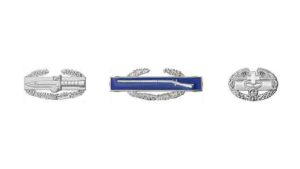The Pathfinder Badge
The Pathfinder Badge is awarded to soldiers of eligible rank and from eligible branches who qualify by completing the United States Army Pathfinder School located at Fort Benning, Georgia. Soldiers demonstrate competence by successfully passing qualification tasks in 6 main areas:
- Advanced land navigation
- Advanced scouting
- Tactical air traffic control
- Airborne operation control
- Sling load operations
- Landing zones
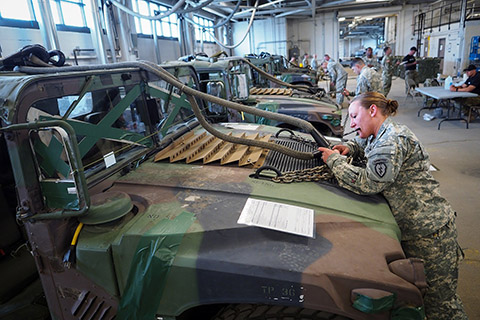
The Pathfinder Badge History and Design
The history of the Pathfinder Badge dates back to 1944. Initial design was provided by Lt. Prescott, a navigator in the 9th Troop Carrier Pathfinder Group (Provisional). Provisional, in this sense, refers to the fact that the unit was an assemblage of personnel, weapons, vehicles, and equipment that was temporarily organized for a limited period of time for the accomplishment of a specific mission. The IX Troop Carrier Command was a United States Army Air Forces unit that was ultimately based at Greenville Army Air Base, South Carolina.

The term “Pathfinder” alluded to the fact that these soldiers typically arrived to the battlefield ahead of larger elements to scout and designate areas in which aviation assets could perform their operations during combat. Essentially, those who wore the pathfinder badge were the ones who found the best path to the field of battle.

In addition to the paratroopers who earned the pathfinder badge, IX Troop Carrier Command air crews who guided paratrooper transports and towed gliders were also authorized to wear the pathfinder badge. The original badge was made of felt and was worn four inches above the left sleeve cuff on the uniform service coat. A new design (current) was approved on 22 May 1964 to be made of enameled metal. Production on the new design began on 11 October 1968.
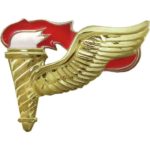 The pathfinder badge is comprised of a flaming torch with wings. The wings symbolize the flight and airborne capabilities of the units and soldiers, while the torch is representative of the leadership and guidance that these professionals provide.
The pathfinder badge is comprised of a flaming torch with wings. The wings symbolize the flight and airborne capabilities of the units and soldiers, while the torch is representative of the leadership and guidance that these professionals provide.
An example of the use of the torch in history can be seen looking back to the Olympians. They carried the torch each year eventually reaching its destination at the location of that years olympic event.
The Pathfinder School
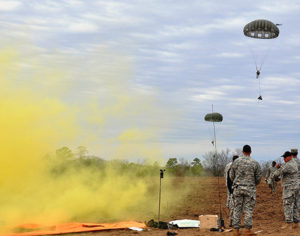
The United States Army Pathfinder School mission is to train eligible Army and other service personnel to lead the way to the battlefield. Training consists of a three-week course designed to instruct and qualify pathfinder candidates in the special skills required to get the job done. The training occurs both during the day and during the night as well as in the air and on the ground.
All training and airborne operations conducted during pathfinder training are done so in accordance with Army Field Manual 3-21.220 (Static Line Parachuting Techniques and Training) and Army Field Manual 3-21.38 (Pathfinder Operations).
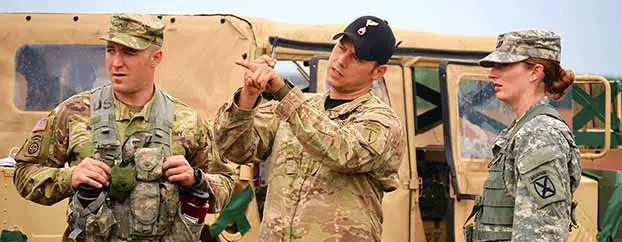
The school is operated by personnel of the 1st Battalion (Airborne), 507th Infantry Regiment. The 507th was initially assigned to the 82nd Airborne Division during World War II before it was transferred to the 17th Airborne Division. Currently, 1st Battalion, 507th Infantry Regiment is part of the United States Army Infantry School. It falls under the command of the Infantry School Airborne and Ranger Training Brigade. The 1/507th Parachute Infantry Regiment oversees the doctrine and operation of the U.S. Army Airborne School as well as the U.S. Army Jumpmaster School.

Special Skills
Pathfinders are imbued with a specific set of specialized skills that allow them to fill an important combat role. In addition to filling that role themselves, they are charged with sharing that knowledge with other soldiers within their units to increase the knowledge base throughout. The six main areas of training are: advanced land navigation, advanced scouting, tactical air traffic control, airborne operation control, sling load operations, and landing zones.
Advanced land navigation
Land navigation is one of the basic skills taught throughout the Army. On the other hand, advanced land navigation training takes the soldier to the individual skill to the next level. The next level is what it takes to earn the pathfinder badge. An advanced land navigation trainee who successfully passes this program of instruction should be able to navigate alone or in groups over most types of rough terrain, under all conditions of visibility, for distances of at least 3 kilometers, and arrive at an objective that is no more than 50 meters in width.
Advanced scouting
The purpose of advanced scouting is to train Pathfinders to develop advanced skills of reconnaissance. Candidates are developing skills to better understand the aviation asset requirements, to communicate battlefield information, and to develop understanding of troops and equipment to the battlefield and open the door for follow-on assets.
Tactical air traffic control
Pathfinders on the ground assist air assault operations by surveying all visible air traffic operating within and around the airspace of the landing zone or airfield. They are responsible for all aircraft, vehicles, and personnel that are moving in, out, and around the area. In addition, they observe and make aircraft aware of any potential hazards including: surface conditions, troops on the ground, vehicle traffic, obstructions, and other aircraft.
Airborne operation control
During airborne (parachute) operations, pathfinders establish and operate day / night parachute drop zones (DZs). They are skilled with the use of the Computed Air Release Parachute system, the Ground Marked Release System (GMRS), as well as the Verbally Initiated Release System (VIRS). Pathfinders also direct Close Air Support (CAS) in support of the airborne operation.
Sling load operations
Sling Load operations are an integral part of the air assault and transport missions. Pathfinders are tasked with ensuring the success of these operations in often difficult situations. In order to ensure that success, pathfinders must be both knowledgeable and highly skilled. Knowledge and skill requirements include knowledge of both primary and remote hooks, parts of the hooks, rigging for the load, and helicopter types and payload capabilities.
Landing zones
Helicopter landing zones can contain one or more helicopter landing sites. Pathfinders establish control centers at each landing site and a release point that they select for the LZs. Two of the main variables that pathfinders have to account for are the minimum landing space requirements and the minimum distance between helicopters on the ground depend upon a number of variables. These variables include:
- Number of helicopters
- Landing formations
- Surface conditions
- Ground slope
- Approach and departure directions
- Prevailing winds
- Density altitude
- Loads
Pathfinder badge qualifiers demonstrate the ability to calculate much of this in their heads!

Pathfinder Unit Drawdowns
As with everything else, things change over time. This applies to the holders of the pathfinder badge assigned to specialized units as well. The 82nd Combat Aviation Brigade boasted the last active pathfinder company in the United States Army. Recently, the unit cased the unit guidon as of the 82nd Airborne Division’s pathfinder company.
Due to the Army’s transformation initiatives, units like pathfinder companies and long-range surveillance companies have been deactivated. Fortunately, the pathfinder story continues. The pathfinder school at Ft. Benning continues to qualify soldiers for the pathfinder badge and these soldiers continue to take this knowledge back to their individual units.
